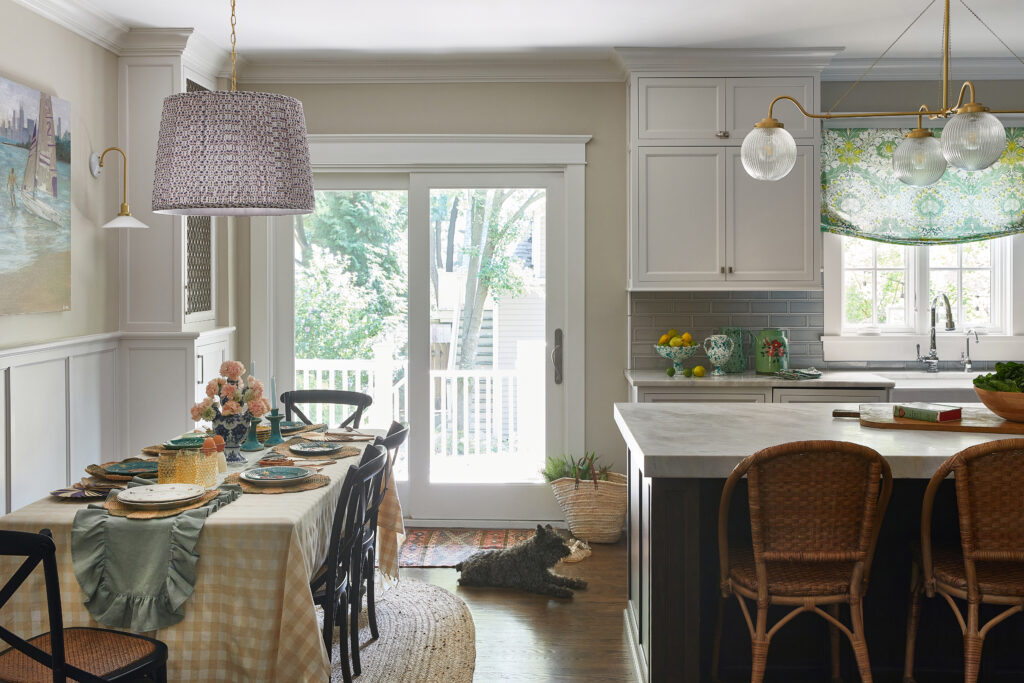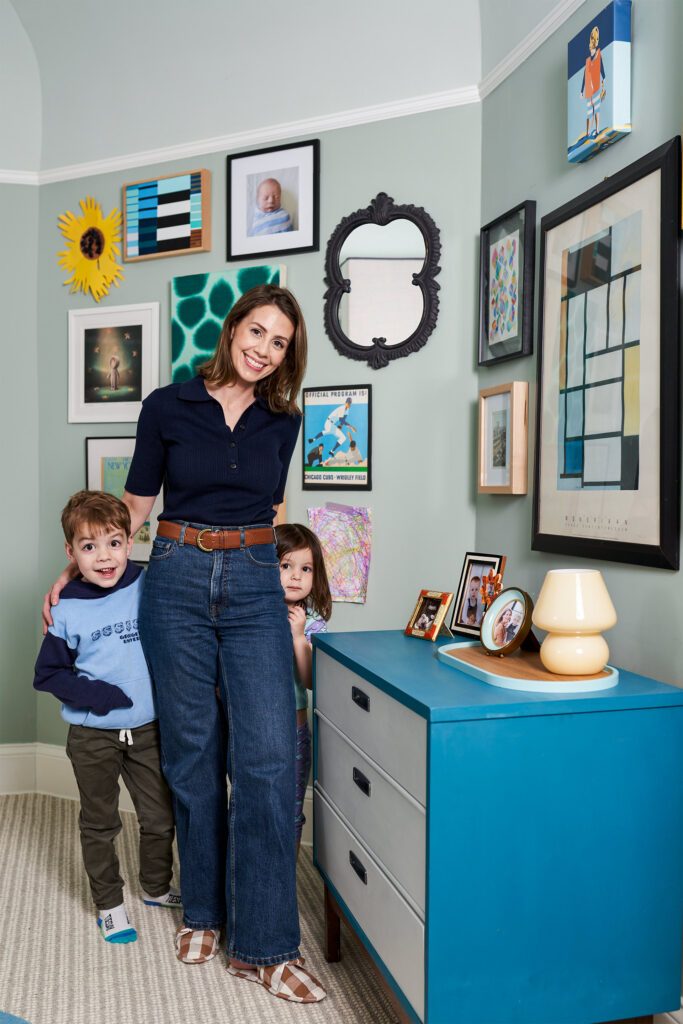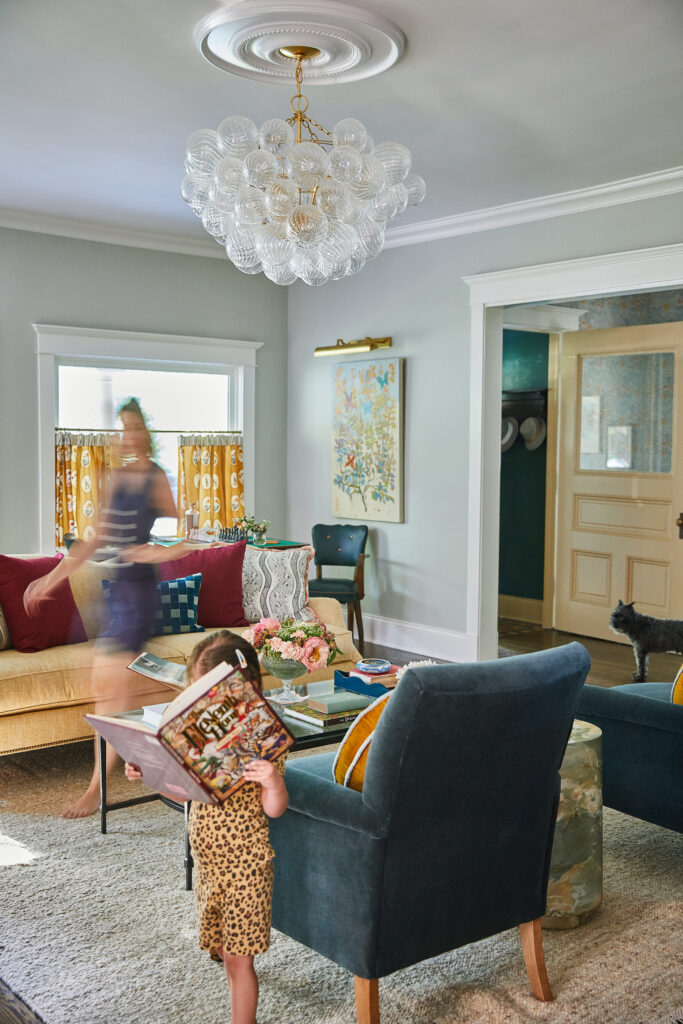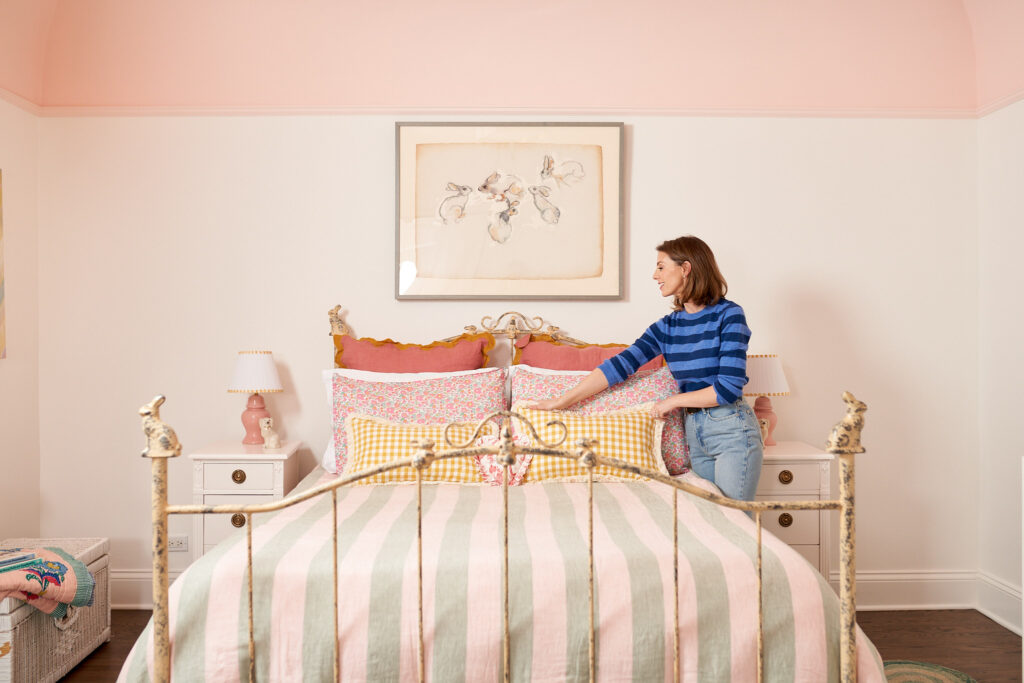Whether you’re four or forty, nine or ninety, you deserve a comfortable and inspiring place to joyfully call your family-friendly home — one that supports you in play and rest, gathering and disconnecting, engaging in activity and finding moments of stillness. A space where you’re undeniably at ease, whether cozied up in a corner nook with only a book, or playing board games around a table enveloped in chairs filled with family and friends.
As an interior designer and through my own experience renovating our family’s Victorian home, I often encounter a particular challenge. The challenge of creating interiors where children can (comfortably) play freely and be themselves, while still allowing the grown-ups to express their personal style and desires. The question that frequently comes up is: how can you achieve this balance while also preserving the charm of an older home?
Designing rooms fit for family living is always a dynamic process — especially in a historic home shaped by generations. Preserving the unique character of a mature space while updating it for modern functionality requires a thoughtful approach. But it’s this careful balance that truly turns a house into a family home. It takes patience and precision, but if you’re reading this, you’re already on your way!
Here’s the advice I share with families when crafting a family home that works for everyone. One that expresses your uniqueness, fosters a sense of ease, encourages connection, and withstands the demands of daily life – all while respecting its historical essence.
01 – Celebrate your family-friendly home’s original character.

My expertise and passion with design lies in creatively and seamlessly blending old and new. If you also appreciate historic charm and storied details, I don’t have to tell you why renovating an older home is so special. And if you’ve ever taken on a reno yourself, you know it’s just as important to bring it up to speed with modern life.
To begin designing your own unique family home, my best advice is to start with those features that made you fall in love with it in the first place. Whether it’s the home’s original ornamental moulding, a grand staircase, a charming archway, or a distinctive mantel that had you hurrying to put your offer in, celebrate the characteristics that drew you to the property. Then put in the work to preserve them.
Knowing which elements you’ll preserve and/or restore helps you define your priorities above all else. It also gives you the clarity to specify other areas that need to be overhauled as you work to blend your vintage style with the functionality your family requires. This way, your favorite features anchor the updated design, allowing you to refresh your home to fit your current lifestyle.
02 – Improve safety & modernize systems.

Styling: Centered by Design
When you have little ones running around, it’s like the space takes on a whole new story. Suddenly, every corner, every surface, becomes a backdrop for their boundless energy and curious adventures. Inevitably, safety and comfort shift to the forefront of your mind. This may not be the most invigorating or aesthetic step in the design process (at least not in the way that sourcing secondhand or choosing wallpaper is!). But we all know it’s essential.
Differentiate between the family-friendly updates that need to be made throughout the entire home and those that can be addressed in specific areas:
- Electrical systems: Conceal outlets and hide cords to create a safer environment for your little wanderers.
- Windows, doors & floors: Depending on where the previous owners left off, older homes may require a pick-me-up when it comes to these essential elements. Windows can be in need of modern, energy-efficient replacements or child-safe locks. Doors can be upgraded with rounded edges and secure latches to prevent accidents. Flooring can need a refresh with durable, non-slip materials that are both practical and stylish.
- Furniture: Opt for sturdy furniture, and make sure rugs are properly anchored to prevent tipping hazards.
- Temporary vs. permanent updates: Consider which features will serve temporary needs (especially during the busy baby-proofing & toddler stages!) and which are essential for the long-term functionality of your home. This approach ensures your investments will offer immediate benefits while also supporting your family’s evolving needs as you grow together in your space.
03 – Design & accessorize for a variety of ages and stages.

Interior design for your family-friendly home doesn’t have to mean compromising on style. Even if you have kids turning your living space into a chaotic wonderland, there’s always a place for personal tastes to pull through.
For different areas in your home, think about who will use them the most. Choose durable textiles for high-traffic spots where little feet wander. And in the corners meant for grown-ups — like offices or formal rooms – Opt for built-in storage and closed cabinets to keep things neat and protect fragile items. Display your treasured art and décor out of kids’ reach. “Out of sight, out of mind” can be a lifesaver.
On the flip side, designate spots where kids can have a say. Whether it’s a playroom, bedroom, or a cozy creative nook, get them involved with choosing colors, themes, and even some furnishings and accessories. This helps them feel valued and gives them a sense of belonging in the spaces you share.
Overall, I’ve found that setting boundaries in the design process is key. But remember, home is as much theirs as it is yours. Everyone deserves to feel relaxed and welcome.
04 – Create a flexible, efficient layout.

Styling: Centered by Design
Function is the heartbeat of a well-designed, family-friendly home. Imagine the rhythm of a typical day in your family: how does everyone navigate the house, from the moment they walk in the door to how they move between rooms? Who lingers where and when? This understanding helps you avoid “traffic jams,” ensuring a smooth and efficient flow throughout the space while also preventing the investment of time and energy into underutilized areas.
But let’s think beyond the conventional. Not every home has a dedicated room for every single need, and that’s more than okay! Often, rooms serve multiple purposes, and this flexibility can actually work in your favor, maximizing your space in creative ways.
Picture this: your home office also moonlights as a guest bedroom. To make the most of this dual-purpose space, choose furniture that adapts to both roles – like a plush sofa that unfolds into a comfy bed, or a vintage storage ottoman that doubles as a stylish side table.
Or consider your living room, which might transform from a play haven to a relaxing retreat after the kids go to school or say goodnight. With a bit of clever and versatile design, you can make it effortlessly shift from one function to another, or accommodate both seamlessly.
As your life and routines change, your home should adapt gracefully, welcoming new functions with ease and remaining a true reflection of who you are and how you live – both today and in the years to come.
05 – Focus on durability & ease in upkeep.

Family life can be messy! The easiest way to maintain multi-use spaces and high traffic areas like hallways, kitchens, and playrooms? Adorn them with materials and finishes that are easy to clean and long-lasting. Consider stain-resistant fabrics, scratch-resistant surfaces, and washable rugs to make life more comfortable for children (and easier for you).
Also, choose items that require minimal maintenance and are easy to clean, such as those that can be wiped down or even machine-washed. Fortunately, many brands now offer products designed with families in mind. Research these thoroughly and take your time to find the right solution for you. Again, making home a lovely, energetic place takes patience!
A little pointer from Meghan: Keep your investments in tip-top shape. Seal your upholstery and rugs with Scotchguard to make those inevitable spills and stains a breeze to clean. And for those precious collectibles – like vases, ceramics, and picture frames – use a reusable, removable museum putty to secure them to shelves and surfaces. It’ll preserve your style and sanity!
The heart of the matter.
Crafting a joyful family-friendly home is both achievable and deeply rewarding, even in the face of the quirks and complexities of working with an older property. Focus on what really matters: connection, warmth, durability, safety, and personality. This way, you’ll design a space that’s cozy and full of character, where every corner is ready to host comforting moments and lasting memories.
Need some expert guidance to apply this advice to your home? I’d be delighted to help! Book a 1:1 consultation with me. We can dive into your specific goals and challenges, whether we meet in-person in the Chicago area or connect virtually from wherever you are.